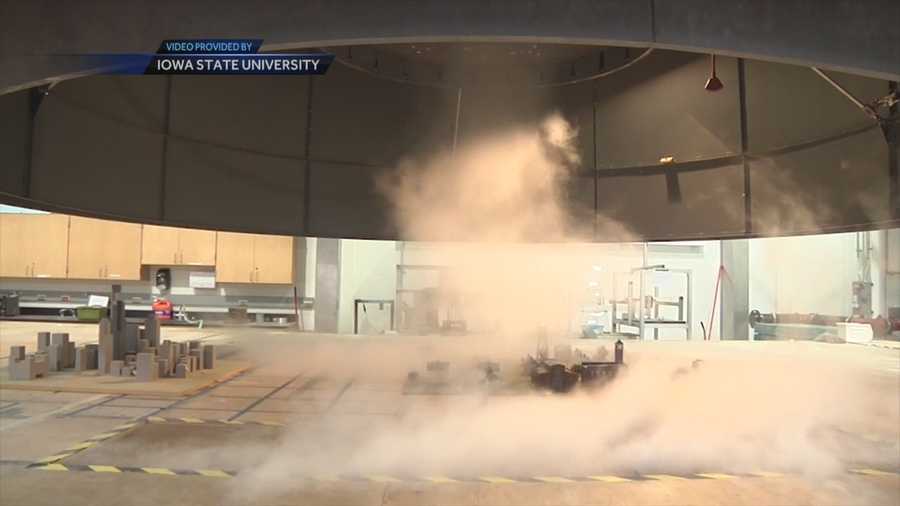Tornado simulator used in university project
A tornado simulator is getting a new life at Iowa State University.
A massive simulator inside Howe Hall creates tornadoes that are meant to behave like real tornadoes out in the field, and now Iowa State researchers are using this in a new project.
An inner duct generates suction inward, the flow goes up and then comes out from the outer duct. The use of packaging peanuts makes it easier to see the vortex as it swirls around a town made of models.
The moving tornado simulator creates the real deal -- just on a much smaller scale.
With each home one-hundredth the size of a real building, Iowa State University aerospace engineering professor Partha Sarkar hopes to save lives by creating mini vortexes in the lab.
“Homes are supposed to protect people. We are not doing our job as engineers when a very high wind event happens and buildings get damaged and people get killed,” Sarkar said.
The simulator measures the pressure at each of the small points, which are connected to tubes. The tubes are plugged into a transducer, and the transducer is hooked up to computer software that records what is happening at each point when a tornado is slamming into it.
Sarkar will be looking at ways to make buildings more resilient when tornadoes touch down and introducing new provisions in building codes.
“You’ll have better buildings that are better designed, which will perform better so they’re not completely wiped out,” he said.
Sarkar is also looking at improving the Enhanced Fujita Scale, or the EF scale.
By giving each tornado not just a number, but a range of wind speeds to go with each number.
The simulator is kicking up again after being dormant for two years. It was about to be shut down, until a three-year, $250,000 grant from the National Science Foundation came in for the simulator.


